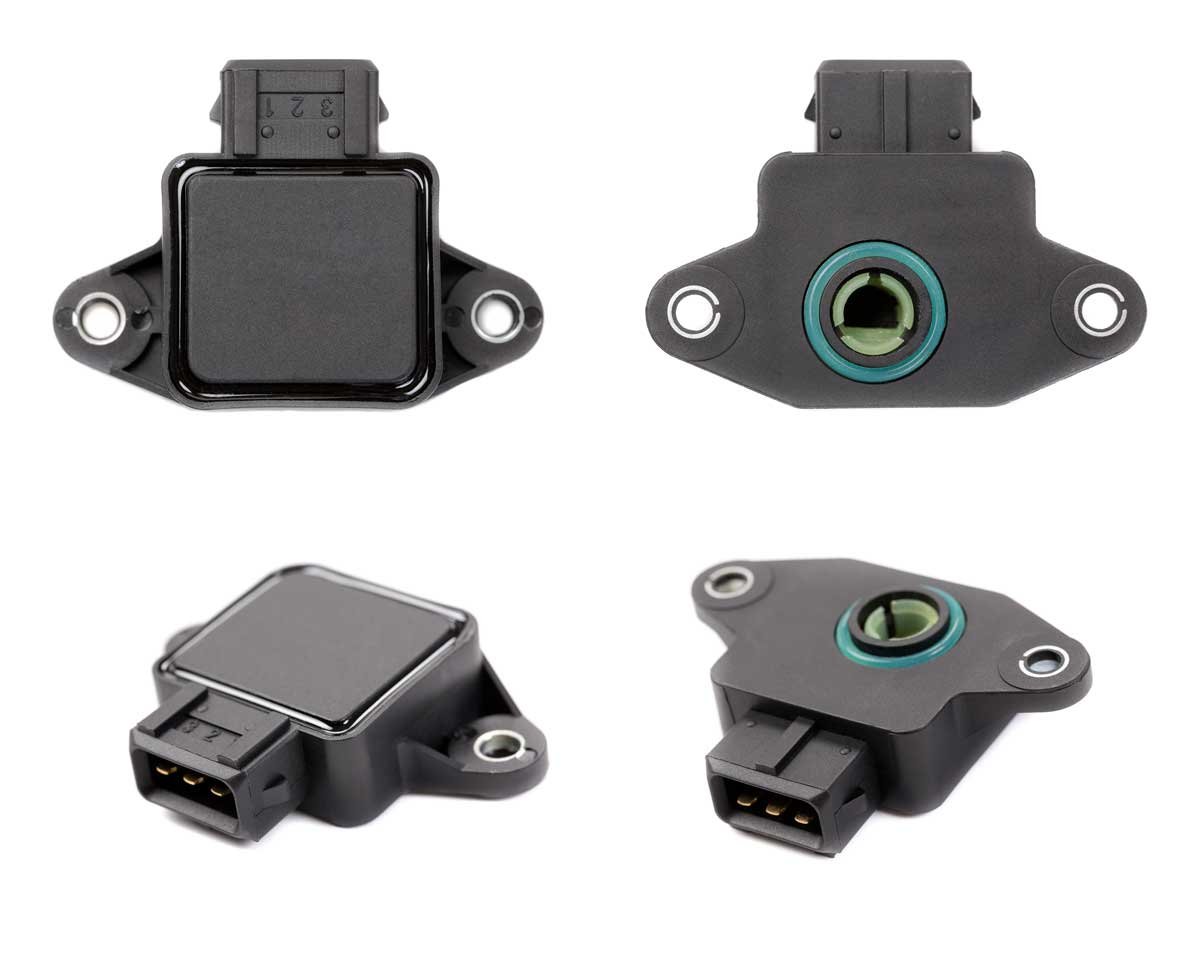A throttle position sensor (TPS) monitors the fuel/air intake of the engine. This sensor is placed on the butterfly shaft where it directly monitors the throttle position and sends the information to your car’s computer, i.e., it checks the amount of pressure you’re exerting on the gas pedal. The throttle is a valve that regulates the amount of vaporized fuel that goes to the cylinders of the engine.
The moment your car’s sensor identifies the position of the pedal, then it becomes easier to regulate the amount of fuel that is getting to the car manifold. Also, the fuel injection system of your car will be able to determine the amount of fuel to inject into the cylinders. A defective throttle position sensor is unable to coordinate all these processes, which can compromise the efficiency of your car’s engine.
To determine if your car has a bad throttle position sensor, watch out for the following signs:

-
‘Check Engine Lights’ Are On
The moment that your throttle position sensor develops functionality issues, the Check Engine Light may turn on. The computer system of your car is intelligent. When it receives any abnormal information, it can immediately warn that there is a problem. One way it lets you know is by turning on the check engine light.
This light may also signal the possibility of other problems in your car. Thus, you should have your car mechanic check it out. It could be a bad throttle position sensor or another problem.
-
Your Car Starts To Jerk
In most cases, when the throttle position sensor is faulty, your car will begin to jerk or buck. A bad TPS may cause the car to accelerate by itself. It may also send fluctuating readings to the car’s computer, resulting in a surge. This sudden surge will make your car accelerate and decelerate. When there’s an extreme surge, the car may stall.
-
The Car Engine Idles Slowly
A bad throttle position sensor won’t only give you problems when you try to accelerate, but also when your car idles. This engine problem is characterized by engine misfires, rough idling, and stalling when you’re stopping your car. Even though you’re not pressing the pedal at idle, the TPS may still be relaying the inaccurate information, which results in rough idling.
-
Rough/Weak Acceleration
Even after pressing the accelerator pedal, your car may not pick up speed. This could be another indication that your throttle position sensor is defective. A faulty TPS may confuse your car’s control module, such that it can’t correctly determine the right amount of fuel and air to be poured into the cylinders.
In case too little air or fuel is delivered, your car will experience problems with acceleration. This may be an intermittent problem if your TPS is semi-faulty. It then transmits irregular readings that make the fuel management system go back and forth between the correct amount of fuel and the incorrect amount.
-
Unexplained Increase In Fuel Consumption
This is one of the leading indicators of a bad throttle position sensor. You may notice that you’re frequently refilling your fuel tank more than before. If your TPS is faulty and keeps on reading high, then a lot of fuel is injected into the cylinders, with much of it going to waste.
Poor fuel consumption may also mean that your car has other problems like dirty fuel injectors or faulty spark plugs. Therefore, you should have a mechanic check your car for the correct diagnosis.
-
Difficulty Changing Gears
You might start experiencing dire problems with the automatic transmission when the TPS is bad. Shifting gears automatically is a complex process that has to work together with the car engine. If your engine RPM (rotations per minute) isn’t working correctly when you shift gears, this might be an indicator that your TPS is bad and needs mechanical attention.
Fixing A Faulty TPS Sensor Problem
Some issues with the sensor can be fixed by repairing or reprogramming it. However, if the issue can’t be solved that way, you might need to completely replace the sensor to avoid problems in the future.
Conclusion
A bad throttle position sensor can be a nightmare for the performance of your car. It can waste expensive fuel and even cause further damages to your engine. More importantly, it can be dangerous to drive a car with a faulty TPS.
This is why it’ll pay to know what to watch out for when your sensor is becoming faulty, so you can arrange for repairs as soon as possible and avoid more expensive damages that often happen when a faulty sensor is left on too long. After all, you can only get the most out of your vehicle when it’s running smoothly and consuming fuel efficiently.














Comments